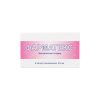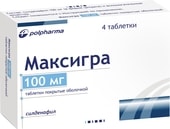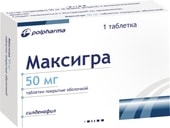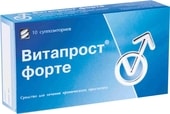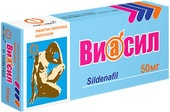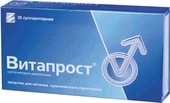Name:
Managra tablets p / o 50 mg in a cell. pack No. 10×1
Description:
Coated tablets, blue, round, with a biconvex surface. The main active ingredient Sildenafil Form of release tablets, film-coated Dosage 100 mg Special instructions and precautions Used with caution in heart disease, anatomical deformity of the penis, sickle cell anemia, multiple myeloma, leukemia. There are reports of cases of hearing loss in patients taking the drug. The specialist should inform the patient about the need to immediately stop taking the drug and seek medical advice in case of sudden decrease or loss of hearing. Diagnosis of erectile dysfunction requires a review of the medical history and a physical examination. Prior to the appointment of pharmacological treatment, it is necessary to determine the potential underlying causes of the disease. Before starting treatment for erectile dysfunction, the doctor should assess the cardiovascular status of their patients, as there is a risk associated with sexual activity. Sildenafil has vasodilating properties, resulting in a mild to moderate reduction in blood pressure. Before prescribing sildenafil, the physician should carefully consider the consequences of a possible decrease in blood pressure, especially in combination with sexual activity. Patients with hypersensitivity to vasodilators (presence of obstruction of blood flow from the left ventricle (aortic stenosis, hypertrophic obstructive cardiomyopathy)) or patients with severe impairment of autonomic blood pressure control require special attention. There is no information on the safety of sildenafil in patients with bleeding disorders or peptic ulcers in the acute stage. Therefore, sildenafil should be administered to these patients only after a careful assessment of the benefit/risk ratio. During the period of post-registration observation, there were cases of serious cardiovascular complications (including myocardial infarction, unstable angina pectoris, sudden coronary death, ventricular arrhythmia, hemorrhagic stroke, transient ischemic attack, arterial hypertension and hypotension), which had temporary connection with the use of sildenafil. Most of these patients, but not all of them, had risk factors for cardiovascular events. Many of these adverse events were observed shortly after sexual activity, and some of them were noted after taking sildenafil without subsequent sexual activity. It is not possible to establish the existence of a direct connection between these phenomena and these or other factors. During the post-registration use of sildenafil, there have been reports of the development of prolonged erection and priapism. If the erection lasts more than 4 hours, the patient should seek emergency medical attention. If urgent measures are not taken in priapism, damage to the tissues of the penis and irreversible loss of potency can occur. The safety and efficacy of sildenafil when used in combination with other PDE-5 inhibitors or other drugs for the treatment of pulmonary arterial hypertension containing sidenafil (Revacio), as well as other drugs for the treatment of erectile dysfunction, have not been studied, therefore the use of such combinations is not recommended. There have been spontaneous reports of cases of visual impairment when taking sildenafil and other PDE-5 inhibitors (see section “Side effects”). Non-arteritic anterior ischemic optic neuropathy (NAION), a rare disease associated with sildenafil and other PDE-5 inhibitors, has been reported in spontaneous reports and observational studies (see section “Side effect”). Patients should be warned that in the event of a sudden visual impairment, you should stop taking sildenafil and immediately consult a doctor (see section “Contraindications”). Since the combined use of sildenafil and alpha-blockers can lead to the development of symptomatic hypotension in some sensitive patients, sildenafil should be used with caution in patients taking ?-blockers (see section “Interaction with other drugs”). The development of this condition is most likely to be observed within 4 hours after taking a dose of sildenafil. In order to minimize the risk of developing orthostatic hypotension, sildenafil therapy should only be started in hemodynamically stable patients using ?-adrenergic blockers. You should also consider the use of sildenafil at an initial dose of 25 mg (see section “Dosage regimen”). In addition, physicians should inform patients about what actions to take if symptoms of orthostatic hypotension appear. In vitro human platelet studies have shown that sildenafil potentiates the antiplatelet effect of sodium nitroprusside. Pharmacological action Selective inhibitor of cyclic guanosine monophosphate (cGMP) specific phosphodiesterase (PDE) type 5, which is responsible for the breakdown of cGMP in the cavernous body of the penis. Actively enhances the relaxing effect of nitric oxide on the smooth muscles of the cavernous body and increases blood flow in the penis. Upon activation of the NO-cGMP chain, observed during sexual arousal, inhibition of PDE-5 leads to an increase in cGMP in the cavernous body. The pharmacological effect is achieved only in the presence of sexual stimulation. Activity against PDE-5 is 10-4000 times greater than activity against other PDE isoforms (1, 2, 3, 4, 6). Pharmacokinetics TCmax after oral administration, on an empty stomach – 0.5-2 hours, bioavailability – 25-60%. When taken with fatty foods, Cmax decreases by 20-40% and is reached after 1.5-3 hours. The volume of distribution in the equilibrium state is 105 liters. Communication with plasma proteins – 96%. Metabolized mainly by CYP3A4, CYP3A5, CYP3A7 (main route) and CYP2C9 (additional route) microsomal liver isoenzymes to form metabolites. The main circulating active metabolite is the N-desmethyl metabolite, whose activity is 50% of that of sildenafil. The total clearance is 41 l / h. T? sildenafil and N-desmethylmetabolite – 3-5 hours. Excreted as inactive metabolites with feces (80%) and kidneys (15%). In patients with renal insufficiency (CC less than 30 ml / min), cirrhosis of the liver and in the elderly, the clearance of sildenafil is reduced. Indications for use Erectile dysfunction, characterized by the inability to achieve or maintain an erection of the penis sufficient for sexual intercourse. Sildenafil is effective only in the presence of sexual stimulation. Dosing regimen For most patients, the recommended dose, taken as needed approximately 1 hour before sexual activity, is 50 mg. Depending on the effectiveness and tolerability of the drug, the dose may be increased to the maximum recommended dose of 100 mg or reduced to 25 mg. The maximum recommended dose is 100 mg. The frequency of taking the maximum recommended dose is 1 time per day. Managra 50 mg and 100 mg tablets are not divided into parts. If it is necessary to prescribe a dose of sildenafil 25 mg, it is recommended to use another drug. Application in patients with impaired renal function In patients with impaired renal function of mild to moderate severity (creatinine clearance in the range of 30-80 ml / min), dose adjustment is not required. In connection with a decrease in the clearance of sildenafil in patients with severe renal impairment (creatinine clearance < 30 ml / min), an initial dose of 25 mg should be used. Application in patients with impaired liver function Since the clearance of sildenafil is reduced in patients with impaired liver function (for example, with cirrhosis), it is recommended to use an initial dose of 25 mg. Use in patients taking other drugs With the exception of ritonavir, whose simultaneous administration with sildenafil is contraindicated, an initial dose of sildenafil 25 mg is recommended for patients receiving concomitant inhibitors of the CYP3A4 isoenzyme (for example, erythromycin, ketoconazole, cimetidine). In order to minimize the likelihood of developing postural hypotension, patients should be in a stable condition during treatment with ?-blockers before starting the use of sildenafil. In addition, in such cases, it is recommended to start the use of sildenafil with a dose of 25 mg. Use in children Sildenafil is not indicated for use in children and adolescents (under 18 years of age). Use in Elderly Patients Dose adjustment of sildenafil in elderly patients is not required. For patients over 65 years of age, it is recommended to start taking sildenafil with a dose of 25 mg. Use during pregnancy and lactation Not intended for use by women. Influence on the ability to drive a car and control moving mechanisms Dizziness and visual disturbances have been reported in clinical trials with sildenafil, patients should be careful when driving a car and operating moving mechanisms. Interaction with other drugs Effect of other drugs on sildenafil In vitro studies: Sildenafil is metabolized mainly with the participation of cytochrome P450 (CYP) 3A4 isoforms (main route) and 2C9 (auxiliary routes). Inhibitors of these isoenzymes may reduce the clearance of sildenafil. In vivo studies: Population pharmacokinetic analysis of data from clinical trials showed a decrease in the clearance of sildenafil with the simultaneous administration of CYP3A4 inhibitors (such as ketoconazole, erythromycin, cimetidine). Despite the fact that in patients taking sildenafil concomitantly with CYP3A4 inhibitors, the incidence of side effects did not increase, these patients should be prescribed sildenafil at an initial dose of 25 mg. Co-administration of the HIV protease inhibitor ritonavir, which is a strong P450 inhibitor, at a dose of 500 mg twice daily with sildenafil (100 mg once) resulted in a 300% increase in sildenafil Cmax and a 1000% (11-fold) increase in plasma sildenafil AUC. Sildenafil does not affect the pharmacokinetics of ritonavir. Based on the results of pharmacokinetic interactions, the simultaneous administration of sildenafil and ritonavir is not recommended and under no circumstances should the maximum dose of sildenafil exceed 25 mg over 48 hours. Co-administration of the HIV protease inhibitor saquinavir (CYP3A4 inhibitor) at a dosage of 1200 mg three times a day with sildenafil (100 mg once) resulted in a 140% increase in sildenafil Cmax and a 210% increase in sildenafil AUC. Sildenafil had no effect on the pharmacokinetics of saquinavir. Strong CYP3A4 inhibitors such as ketoconazole and itraconazole are expected to have an even stronger effect on the pharmacokinetics of sildenafil. With a single dose of 100 mg of sildenafil together with erythromycin, a specific inhibitor of CYP3A4 (500 mg twice a day for 5 days), against the background of achieving a stable concentration of erythromycin in the blood, there was an increase in the AUC of sildenafil by 182%. In a study in healthy male volunteers, there was no evidence of an effect of azithromycin (500 mg daily for 3 days) on the AUC, Cmax, Tmax and half-life of sildenafil or its main circulating metabolite. Cimetidine (800 mg), a cytochrome P450 inhibitor and non-specific CYP inhibitor, when taken with sildenafil (50 mg) in healthy volunteers, resulted in an increase in plasma concentrations of sildenafil by 56%. Grapefruit juice is a weak inhibitor of CYP3A4 and may lead to a slight increase in plasma levels of sildenafil. Single doses of antacids (magnesium hydroxide/aluminum hydroxide) did not affect the bioavailability of sildenafil. Although specific interaction studies of all drugs with sildenafil have not been conducted, pharmacokinetic analysis did not show an effect on the pharmacokinetics of sildenafil of such drugs as CYP2C9 inhibitors (tolbutamide, warfarin, phenytoin), CYP2D6 inhibitors (selective serotonin reuptake inhibitors, tricyclic antidepressants), thiazide diuretics and potassium-sparing diuretics, angiotensin-converting enzyme inhibitors, calcium channel blockers, β-adrenergic antagonists or inducers of CYP450 metabolism (rifampicin, barbiturates). Nicorandil has potassium channel activator properties and nitrate-like activity, this drug is potentially capable of clinically significant interaction with sildenafil. In a study in healthy male volunteers, co-administration of the endothelin antagonist bosentan (which is a moderate inducer of CYP3A4, CYP2C9, and possibly CYP2C19) at steady state (125 mg twice daily) and sildenafil at steady state (80 mg three times daily) day) led to a decrease in AUC and Cmax of sildenafil by 62.6% and 55.4%, respectively. Effect of sildenafil on other drugs. In vitro studies: Sildenafil is a weak inhibitor of cytochrome P450 isoenzymes 1A2, 2C9, 2C19, 2D6, 2E1 and 3A4 (1C50 > 150 μM). When using the recommended doses, it is unlikely that sildenafil will change the clearance of substrates of these isoenzymes. Data on the interaction of sildenafil and non-specific phosphodiesterase inhibitors, such as theophylline and dipyridamole, are not available. In vivo studies: It has been shown that sildenafil can potentiate the hypotensive effect when using nitrates. Therefore, the use of nitric oxide donators, organic nitrates or organic nitrites in any form, constantly or periodically, in conjunction with sildenafil, is contraindicated. In three special studies, patients with benign prostatic hyperplasia with a stable condition on doxazosin therapy were simultaneously prescribed the α-blocker doxazosin (4 mg and 8 mg) and sildenafil (25 mg, 50 mg and 100 mg). In this study, there was an average additional decrease in blood pressure in the horizontal position by 7/7 mm Hg. Art., 9/5 mm Hg. Art. and 8/4 mm Hg. Art., and in a vertical position – by 6/6 mm Hg. Art., 11/4 mm Hg. Art. and 4/5 mm Hg. Art., respectively. When sildenafil and doxazosin were co-administered to stable patients on doxazosin therapy, there were rare cases of symptomatic postural hypotension, symptoms of dizziness, but no syncope. Simultaneous administration of sildenafil to patients taking ?-blockers may lead to symptomatic arterial hypotension in a small proportion of patients with hypersensitivity. There was no interaction of sildenafil with tolbutamide (250 mg) or warfarin (40 mg), drugs that are metabolized by CYP2C9 cytochrome P450 isoenzymes. Sildenafil (50 mg) did not potentiate the increase in bleeding time caused by acetylsalicylic acid (150 mg). Sildenafil (50 mg) did not potentiate the hypotensive effect of alcohol in healthy volunteers who had a mean maximum blood alcohol level of 80 mg/dL. An analysis of the safety data did not reveal a difference in the side effect profile in patients taking sildenafil alone and in combination with antihypertensive drugs or placebo (diuretics, ?-blockers, ACE inhibitors, angiotensin II antagonists, antihypertensive drugs (vasodilators and central action), calcium channel blockers and ?-blockers). With the simultaneous appointment of sildenafil (100 mg) and amlodipine in patients with arterial hypertension, an average additional decrease in blood pressure in a horizontal position of 8 mm Hg was found. Art. for systolic blood pressure and 7 mm Hg. Art. for diastolic blood pressure. Sildenafil (100 mg) did not affect the pharmacokinetics of the HIV protease inhibitors saquinavir and ritonavir (CYP3A4 substrates) when stable during treatment with these drugs. Sildenafil at steady state (80 mg three times a day) caused an increase in the AUC of bosentan (125 mg twice a day) by 49.8% and Cmax by 42%. Contraindications Hypersensitivity; simultaneous reception of donors of nitric oxide or nitrates in any form. Contraindicated in patients with loss of vision in one eye associated with anterior ischemic optic neuropathy not due to arteritis (NAION), regardless of the association of vision loss with previous use of PDE-5 inhibitors. Taking the drug is contraindicated in the presence of severe liver failure, arterial hypotension (BP<90/50 mmHg), patients with a recent stroke or myocardial infarction, in the presence of hereditary degenerative disorders of the retina, such as retinitis pigmentosa (a small proportion of these patients have genetic disorders of retinal phosphodiesterase). Erectile dysfunction medications, including sildenafil, should not be used by people for whom sexual activity is not recommended (patients with severe cardiovascular disease such as unstable angina or severe heart failure). Composition 1 tablet contains: active ingredient: sildenafil in the form of sildenafil citrate - 50 mg or 100 mg; excipients: anhydrous calcium hydrogen phosphate, sodium croscarmellose, magnesium stearate, microcrystalline cellulose, Opadry (polyvinyl alcohol, partially hydrolyzed, talc, macrogol 3350, lecithin (soy), titanium dioxide E 171, iron oxide yellow E 172, aluminum varnish based on indigo carmine E 132). Overdose Doses of 200 mg do not lead to an increase in efficacy, but the frequency of adverse reactions increases. Symptoms: headache, hot flashes, dizziness, dyspepsia, nasal congestion, blurred vision. Treatment: standard supportive care. Hemodialysis is not effective because sildenafil is highly bound to plasma proteins and is not excreted in the urine. Side effects The most important adverse reactions that occurred in clinical trials are listed by system with an indication of frequency: very common (?1/10), frequent (?1/100 to <1/10), infrequent (?1/1000 to < 1/100), rare (?1/10.000 to <1/1000). Infectious and parasitic diseases: infrequently - rhinitis. Immune system disorders: infrequently? hypersensitivity. Nervous system disorders: very common headache; often ? dizziness; infrequently ? drowsiness, hypesthesia; rarely ? acute cerebrovascular accident, transient ischemic attack, convulsions, recurrence of convulsions, syncope. On the part of the organs of vision: often? blurred vision, impaired color perception, blurred vision; infrequently ? conjunctiva, impaired lacrimation, other eye pathology, pain in the eye area; rarely ? anterior ischemic optic neuropathy not caused by arteritis, retinal vascular occlusion, arteriosclerotic retinopathy, retinal damage, glaucoma, visual field defects, diplopia, decreased visual acuity, myopia, asthenopia, vitreous floaters, iris lesion, mydriasis, presence in the field of view of rainbow circles around light sources, swelling of the eye, swelling of the eye, conjunctival hyperemia, eye irritation, unusual sensation in the eye, swelling of the eyelids, discoloration of the sclera. Disturbances from the organ of hearing and balance: infrequently? dizziness, tinnitus; rarely ? deafness. Cardiac disorders: infrequently - tachycardia, palpitations; rarely ? sudden coronary death, myocardial infarction, ventricular arrhythmia, atrial fibrillation, unstable angina. Vascular disorders: often - skin flushing, hot flashes; infrequently - arterial hypertension, arterial hypotension. Respiratory system disorders, chest organs: often? nasal congestion; infrequently - epistaxis, congestion of the paranasal sinuses; rarely ? feeling of tightness in the throat, swelling of the nasal mucosa, dryness of the nasal mucosa. Disorders from the gastrointestinal tract: often? nausea, dyspepsia; infrequently ? gastroesophageal reflux disease, vomiting, upper abdominal pain, dry mouth; rarely - oral hypesthesia. Skin and subcutaneous tissue disorders: Uncommon rash, rarely - Stevens-Johnson syndrome, toxic epidermal necrolysis. Violations from the skeletal-high system and connective tissue: infrequently? myalgia, pain in the extremity. Renal and urinary tract disorders: Uncommon hematuria. From the genital organs and mammary gland: rarely? bleeding from the penis, priapism, hematospermia, increased erection. General disorders: infrequently? chest pain, feeling hot, fatigue, rarely irritability. Influence on the results of laboratory and instrumental studies: infrequently - an increase in heart rate. Storage conditions In a place protected from light and moisture, at a temperature not exceeding 25 ° C. Keep out of the reach of children. Buy Managra tablets p/o 50mg No. 10x1
| INN | SILDENAFIL |
|---|---|
| The code | 75 346 |
| Barcode | 4 810 201 018 126 |
| Dosage | 50mg |
| Active substance | Sildenafil |
| Manufacturer | Borisovsky ZMP, Belarus |
Related products
Sexual health
 Free worldwide shipping on orders $99+
Free worldwide shipping on orders $99+  US: temporary delays — postal services aligning new import rules,
US: temporary delays — postal services aligning new import rules,  EU: 1–2 weeks,
EU: 1–2 weeks,  Worldwide: 1–4 weeks
Worldwide: 1–4 weeks 


